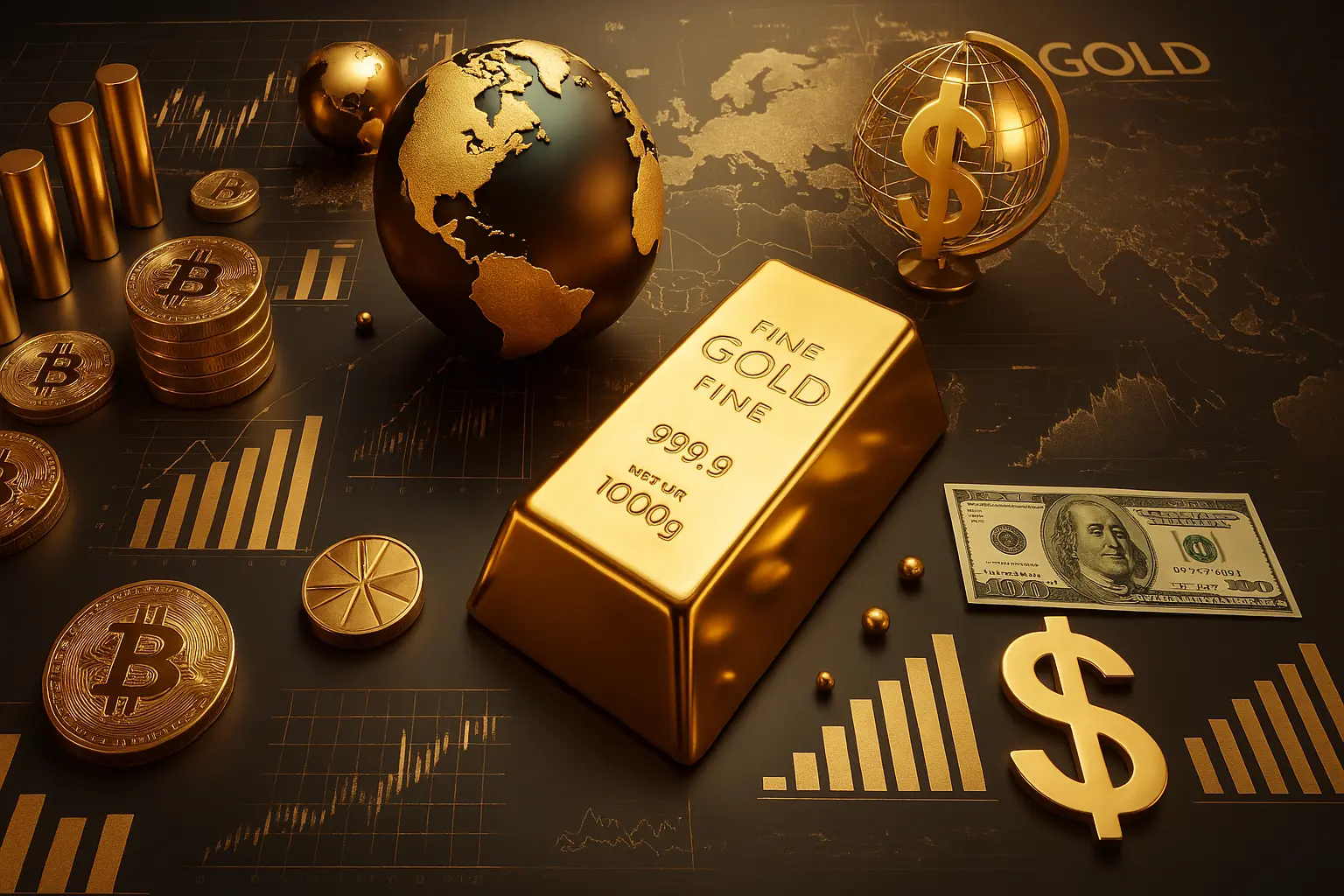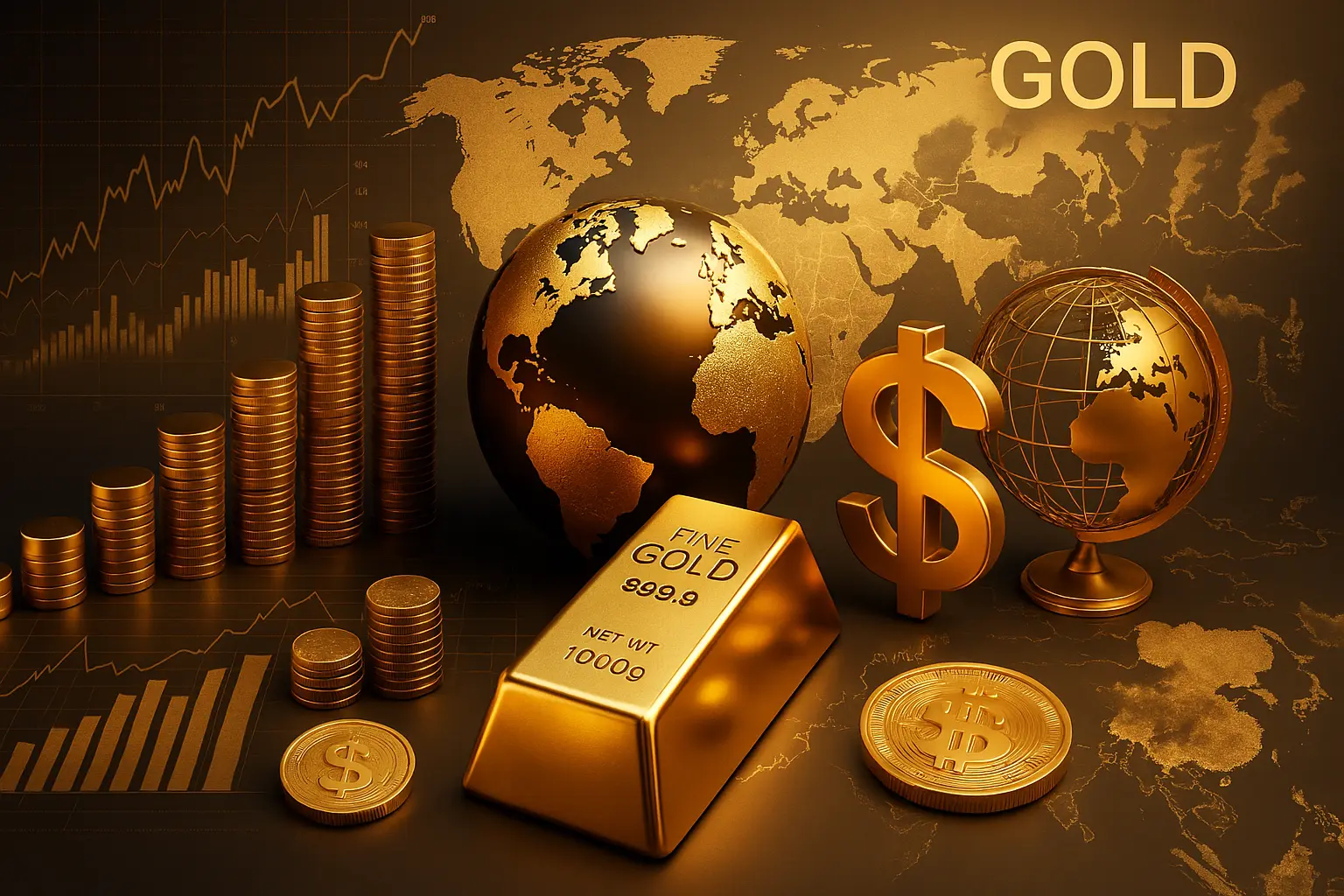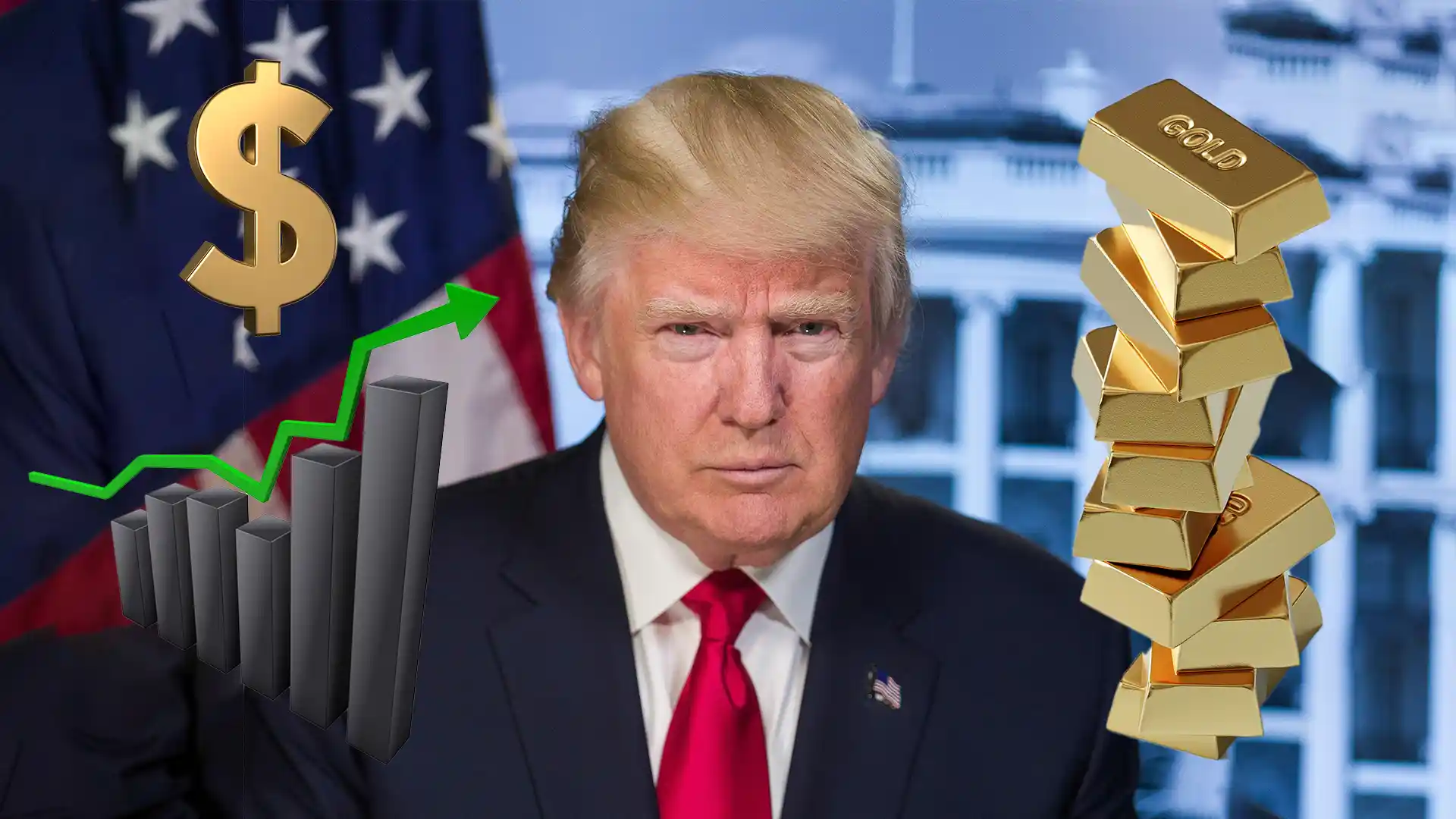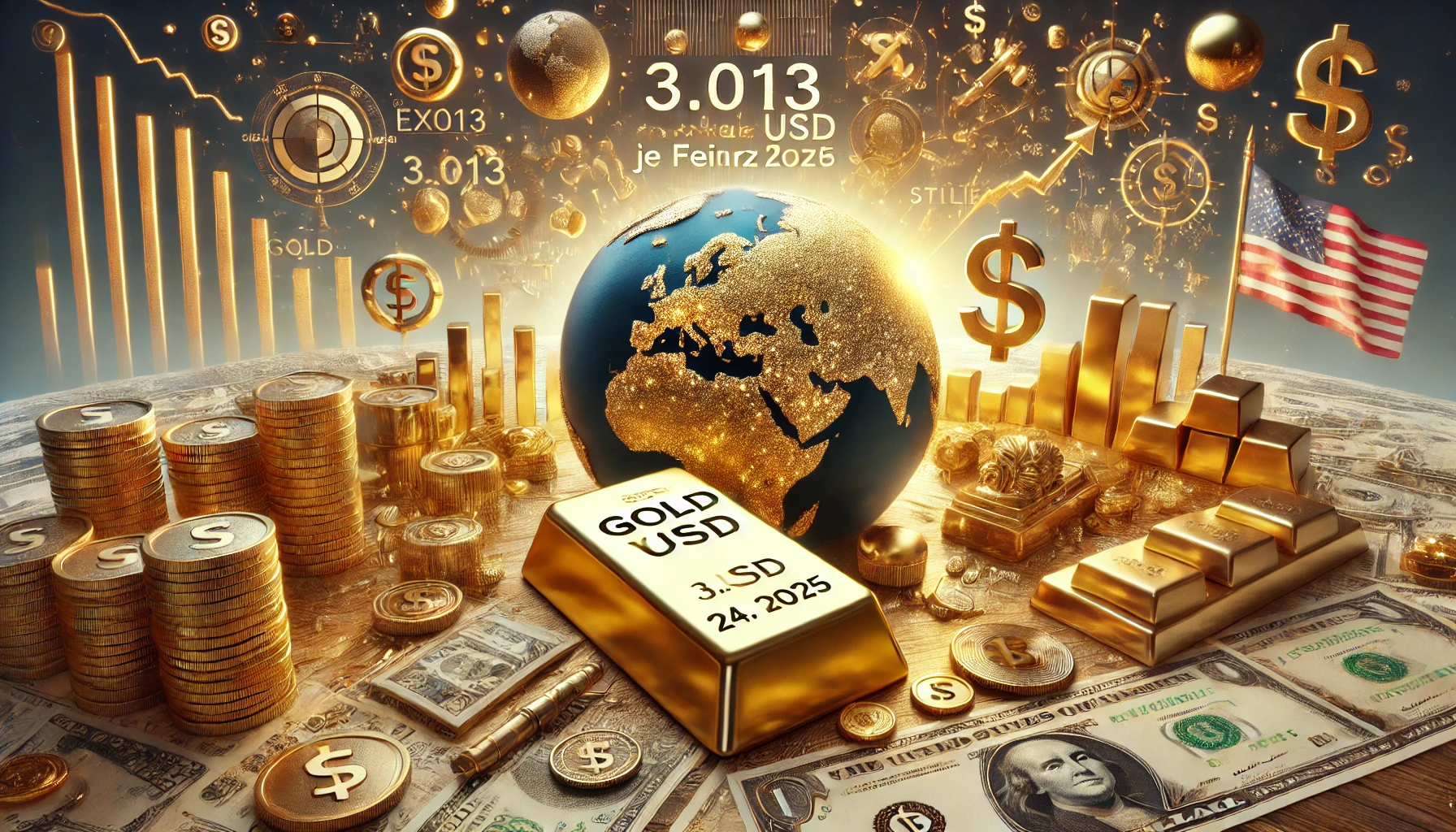Table of contents
Gold Price News: Sideways movement at USD 2,650 - Volkswagen crisis and uncertainties in France dominate the markets
Dr. Mathias Kunze
Senior Consultant in Commercial and Tax Law
8 min.
Published on: 04.12.2024 | 22:17 UTC

Today's gold price and important market developments from 04.12.2024 in the live ticker
Source: ChatGPT (OpenAI)
Gold price consolidates: Sideways movement continues to dominate the markets
The gold price is trading at USD 2,650 per troy ounce today, December 4, 2024, which represents a continuation of the sideways movement that has been ongoing for days. This consolidation indicates that market participants are still waiting for clear impetus to position themselves in a certain direction. Despite global uncertainties such as geopolitical tensions and economic challenges, the gold price remains stable within a narrow trading range.
The current quiet phase on the gold market reflects a balance between supply and demand. Investors are holding back on major purchases or sales while waiting for important macroeconomic signals. These include possible developments in monetary policy or geopolitical events. At the same time, the market is supported by seasonal factors, as the end of the year can traditionally be a period of increased demand for gold.
Volkswagen in crisis: A traditional company in upheaval
Volkswagen - one of the world's leading car manufacturers - is currently facing enormous challenges. The company is struggling with falling sales figures in key markets such as Europe and China, while competition from the USA and Asia is gaining strength. In addition, rising raw material prices and ongoing supply chain problems are putting further pressure on margins in the automotive business.
The situation in the field of electromobility is particularly critical. Although Volkswagen has invested heavily in the development of electric vehicles, success in this segment is falling short of expectations. Analysts report a lack of competitiveness compared to Tesla and new Chinese manufacturers, which offer more cost-effective and technologically advanced models. The problems are already having an impact on the strategic direction: CEO Oliver Blume feels compelled to present a comprehensive restructuring plan, which includes job cuts and a revision of the production strategy.
Another negative factor is the uncertainty surrounding the European Union's sustainability targets. The stricter CO2 emission regulations are putting Volkswagen under additional pressure, as considerable investments are required to reduce fleet emissions. At the same time, there is the threat of high fines if the targets are not met.
The Volkswagen crisis is a symptom of the broader economic uncertainties that may also affect the gold price. Firstly, the economic weakness of such a large industrial group could further shake confidence in the European economy, which could drive investors into safe-haven assets such as gold. Secondly, the uncertainty surrounding commodities and production costs is a major factor, as a rise in commodity prices could further increase the attractiveness of gold as a hedge against inflation. Finally, Volkswagen's restructuring measures could have an impact on the entire European market, which carries the risk of a broader economic slowdown - another factor that could bring gold into the focus of investors.
Political uncertainty in France: Protests and tensions shake the nation
France is once again facing a wave of political and social unrest. Following the adoption of controversial reforms by President Emmanuel Macron's government - including pension reform measures and tax adjustments - nationwide protests and strikes have significantly disrupted public life. Trade unions and opposition groups are mobilizing massively against the government, which has led to blockades, production stoppages and a slump in public transport.
The situation is particularly volatile in Paris, where tens of thousands of demonstrators have taken to the streets to protest against the government's policies, which are perceived as socially unjust. In some regions, the protests were accompanied by violent clashes with the police, which further exacerbated tensions. The growing discontent among the population is not only jeopardizing France's political stability, but also confidence in the country's economic development. Analysts are already warning of a possible downgrading of France's credit rating, which could have significant consequences for the EU economy.
The government is also under pressure to push ahead with its reform agenda ahead of the 2025 presidential elections, while the opposition is using the momentum to further destabilize Macron's majority in parliament. Uncertainty about the country's political course is not only weighing on the national economy, but also on the willingness of international players to invest.
The political uncertainty in France is also spilling over into the European markets, which could have a direct impact on demand for gold as a safe haven asset class. Firstly, a potential loss of confidence in the French economy could reduce the attractiveness of the euro and drive investors into the gold market. Secondly, the unrest increases general risk aversion, which could prompt investors to hedge more in gold. Finally, a further escalation of the protests could increase market volatility in Europe and further strengthen gold as protection against political and economic uncertainties.
Incident in the Baltic Sea: Russian ship and Bundeswehr helicopter in conflict
There has been a diplomatically explosive incident between a Russian warship and a Bundeswehr helicopter in the Baltic Sea. According to official reports, the German aircraft approached a Russian warship in international waters as part of a routine surveillance mission. This is said to have resulted in an aggressive maneuver by the Russian ship, forcing the German helicopter to change course abruptly to avoid a collision.
The German government strongly condemned the behavior of the Russian ship and described it as a “provocation that endangers security in the region”. The Ministry of Defense has lodged an official complaint with the Russian embassy and at the same time informed NATO allies about the incident. Russia rejected the accusations and accused Germany of violating the safety zone of its ship. Tensions between Moscow and Berlin are thus intensifying once again after a similar incident between NATO ships and Russian military aircraft recently made headlines.
This incident underlines the fragility of the security situation in the Baltic Sea - a strategically important region that is increasingly becoming the scene of military demonstrations and provocations. In a statement, NATO Secretary General Jens Stoltenberg warned of the potential escalation risks of such events and called for immediate de-escalation.
The incident in the Baltic Sea highlights the increasing geopolitical uncertainty in Europe and could drive demand for gold as a safe haven investment. On the one hand, it exacerbates tensions between NATO and Russia, which increases the risk of further conflict in the region. Secondly, the prospect of a destabilization of the European markets could reduce confidence in traditional currencies such as the euro and encourage investors to invest in gold. Historically, geopolitical risks of this nature tend to support the price of gold. This is particularly evident when they are accompanied by other global uncertainties such as the war in Ukraine or tensions in Asia.
Technical analysis: Gold price remains in a stable sideways trend
The price of gold is currently trading at USD 2,650 per troy ounce and has been moving sideways for several days. This consolidation indicates that the market is in a state of transition while both buyers and sellers wait for stronger impetus.
From a technical chart perspective, the gold price is moving in a narrow trading range between the support zone at USD 2,620 and the resistance at USD 2,666. The Relative Strength Index (RSI) is in neutral territory at around 50, which indicates balanced market momentum. At the same time, the Moving Average Convergence Divergence (MACD) shows a slight upward movement, but remains close to the zero line, signaling neither a clear bullish nor bearish trend.
A decisive technical factor is the support level of USD 2,620. Should the gold price fall below this level, this could trigger a new wave of selling that could push the price to USD 2,600 or lower. On the upside, a break above USD 2,666 would pave the way for a rise towards the next barrier at USD 2,725.
Volatility remains low, indicating a short-term lull. However, technical indicators suggest that a stronger breakout is possible in the coming days. Market participants should keep a close eye on developments, particularly in view of the existing uncertainties caused by geopolitical tensions and macroeconomic factors such as the Federal Reserve's interest rate policy.
Overall, the market for gold remains directionless in the short term, offering potential triggers for both a rise and a fall in the gold price. However, the current trading range offers interesting opportunities for technically oriented traders who are betting on short-term movements.
Market outlook: Gold price between stability and potential momentum
In the coming days, the gold price is likely to remain trapped in its narrow trading range between USD 2,620 and USD 2,666 while market participants wait for stronger impetus. However, the combination of macroeconomic uncertainties and geopolitical tensions could soon bring this sideways movement to an end.
On the one hand, political uncertainty in Europe - particularly in France and as a result of the recent incident in the Baltic Sea - could trigger a renewed flight to safe-haven assets such as gold. On the other hand, the stabilization of the US dollar represents resistance for the gold price, which is being driven by the latest labour market data and the Federal Reserve's stance.
In the short term, external factors such as developments in Ukraine or surprises in US economic data could also influence the gold market. Should the global risk situation intensify due to escalating geopolitical tensions or unexpectedly weak economic data, for example, the gold price could leave its current trading range and aim for new highs.
On the technical side, a breach of the USD 2,666 mark remains crucial in order to signal a sustained upward movement. If this is successful, the gold price could potentially reach the next hurdle at USD 2,700. Conversely, a fall below the USD 2,620 support level could indicate that the price could drop to the USD 2,600 range or below. Such movements provide important indicators for market participants regarding the possible resolution of the current sideways phase.
For investors, gold remains a key hedging instrument against uncertainty. Demand from central banks and seasonal trends in December could support the price. Nevertheless, investors should keep a close eye on market developments, as short-term volatility could be triggered by external events.
Dr. Mathias Kunze
Senior Consultant in Commercial and Tax Law
Blog

All-time high: Gold price breaks through USD 3,000 for the first time

Gold in industry: A detailed analysis of its interactions with halogens and in cyanide solutions







